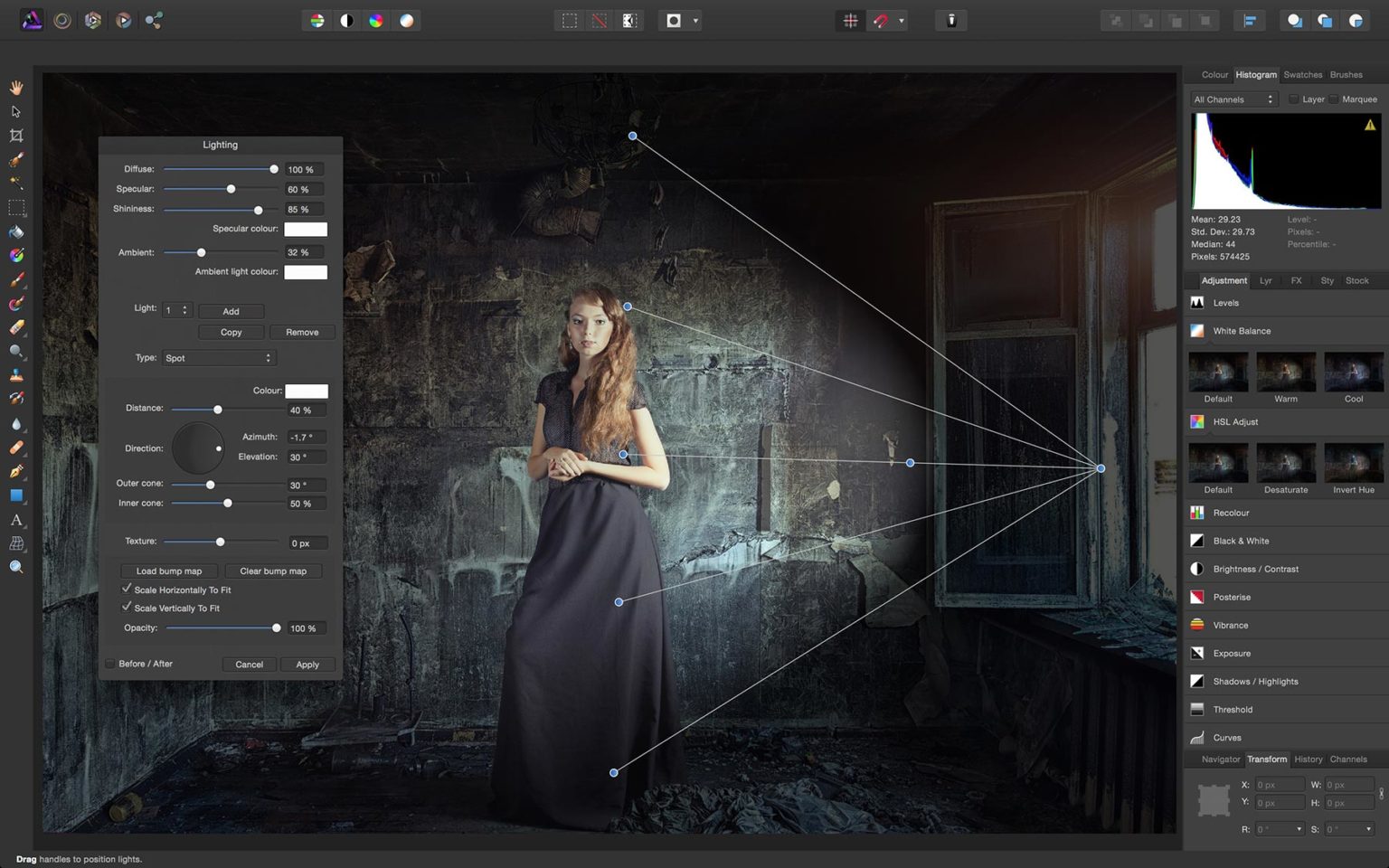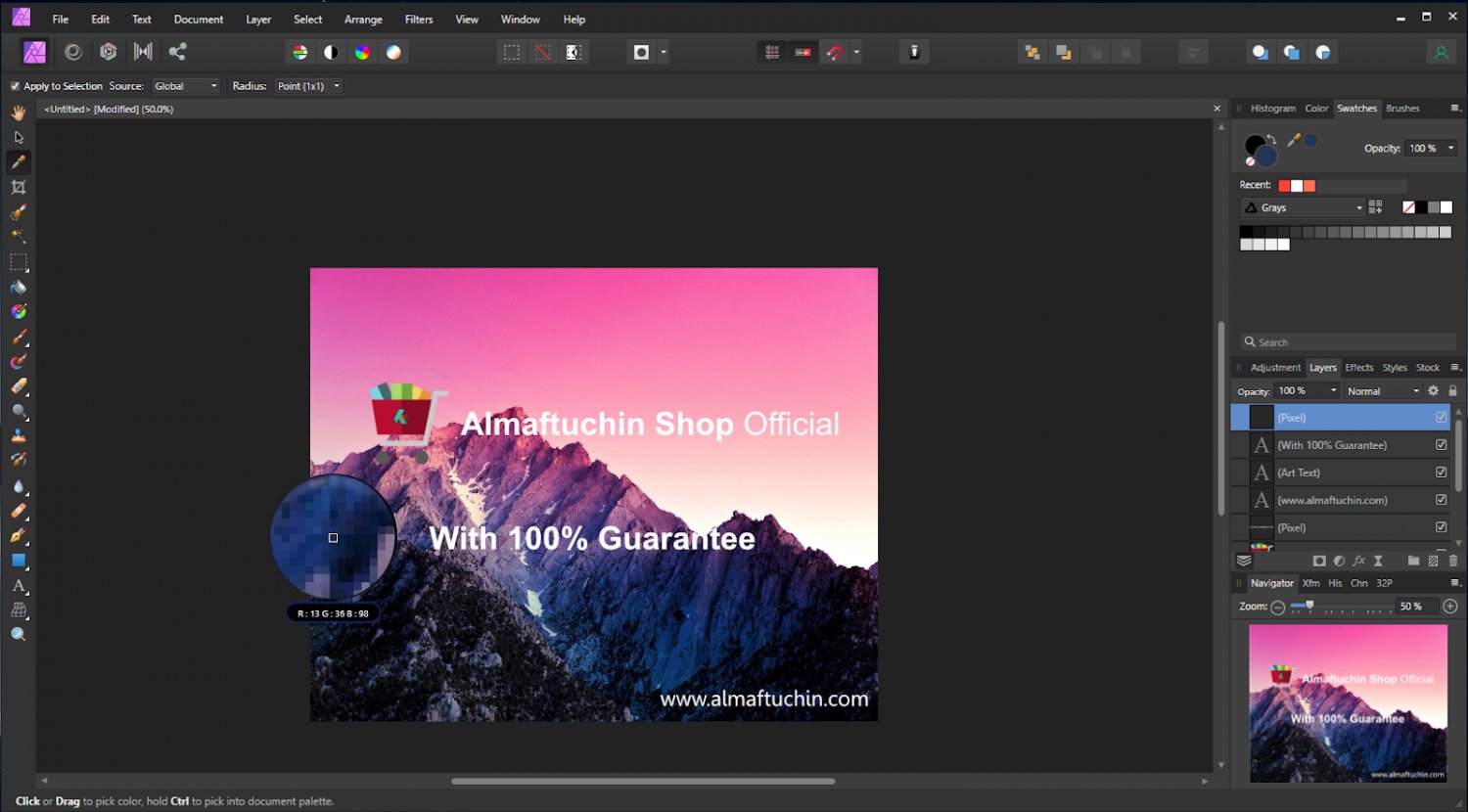


To me, it would make sense to have lens calibration routines right within Affinity. I've been keen to run the Python scripts, but I got stuck on loading certain arcane libraries. The problem with Lensfun is that it's really only supported by a few developers on GitHub, and has been losing momentum. I think the use of Lensfun, a community database, is the right decision. I don't expect Affinity to do the legwork for me.
SERIF AFFINITY PHOTO V1.7.3.475 REQUIREMENTS SOFTWARE
That is nice, but I understand that obtaining and testing lenses is a very expensive proposition for a software company.

Some software solutions are built around lens correction, e.g. I'm not quite on-board with that, and I do feel somewhat short-changed by Canon. I suppose that in Canon's view, everyone should use DPP, and that's the end of it.

I have no problem with that, as long as the manufacturer enables me to do the computational part. When I purchase a lens like 24-240, 'm purchasing an imaging system that is partly optics, partly computation. Ideally, the lens manufacturer would supply this data. For my lenses, these corrections are not just a nice-to-have they are as essential as demosaicing. More and more, these types of corrections are becoming an essential part of the processing flow. For example, the vignetting model could be estimated from shooting flat frames, and for c/a I could shoot a bunch of images through treebranches against a washed-out sky (before those branches leaf out). It'd be nice to calculate these corrections on images shot specifically for calibration, and then to be able to store the model for future use. They work great on some images, but on other scenes these tools produce spurious results. straightening (rotation).Īffinity has some nice tools for automatic vignetting correction and automatic c/a correction. There are some nice aspects in the Affinity raw persona that are missing in DPP e.g. DPP works well, but for workflow considerations I really like to work fully within Affinity. When I fist bought my mirrorless gear, I used Canon's DPP software for raw processing. I think a lens calibration module would be relatively easy to implement, it would add a lot of power to an already powerful package, and it would give Affinity a competitive advantage. I know photoshop users are bemoaning the lack of RF-lens support. I think this would give Affinity yet another leg up on Adobe. It'd be great to have a lens calibration module built right in to Affinity. Lensfun is a wonderful resource, but momentum behind it seems to have slowed. The reality is that these days, these corrections are compulsory. But all of this got me thinking: what if these scrips were built right into Affinity? What if I could simply load a flat frame into Affinity and tell it to create a model that I could store as a lens definition? What if I could load a photo with a high-contrast scene from which I could compute (and store) an accurate c/a model? I'm now in the position where I'm looking to create my own lens definitions using the instructions found here: This involves running Python scripts, which is awkward but doable. For these the distortion corrections are not bad, but the vignetting definitions are poor and the c/a corrections are not there. Desperate, I trolled the internet and found some unofficial lens definitions. Tokina 14-20/2), these new and popular RF-mount lenses are not supported. I downloaded the Lensfun repository, and while this helped me find support for some lenses I own (e.g. Unfortunately, the Lensfun database doesn't support these lenses. Unlike older film-era lenses, the distortion and light fall-off corrections for newer lenses are compulsory and not optional. The Canon 24-240 and 16/2.8 rely on computer corrections for correct imaging. I'm starting to like it more and more as I learn. Like so many photographers I was loathing the Adobe subscription model and switched to Affinity. CS6 doesn't handle the CR3 files this camera produces. Then I bought a Canon RP with an 24-240 and 16/2.8. Until late last year I was using photoshop CS6. In 2005, I switched from film to digital/photoshop. I'm a keen amateur photographer who's been shooting for over 30 years.


 0 kommentar(er)
0 kommentar(er)
